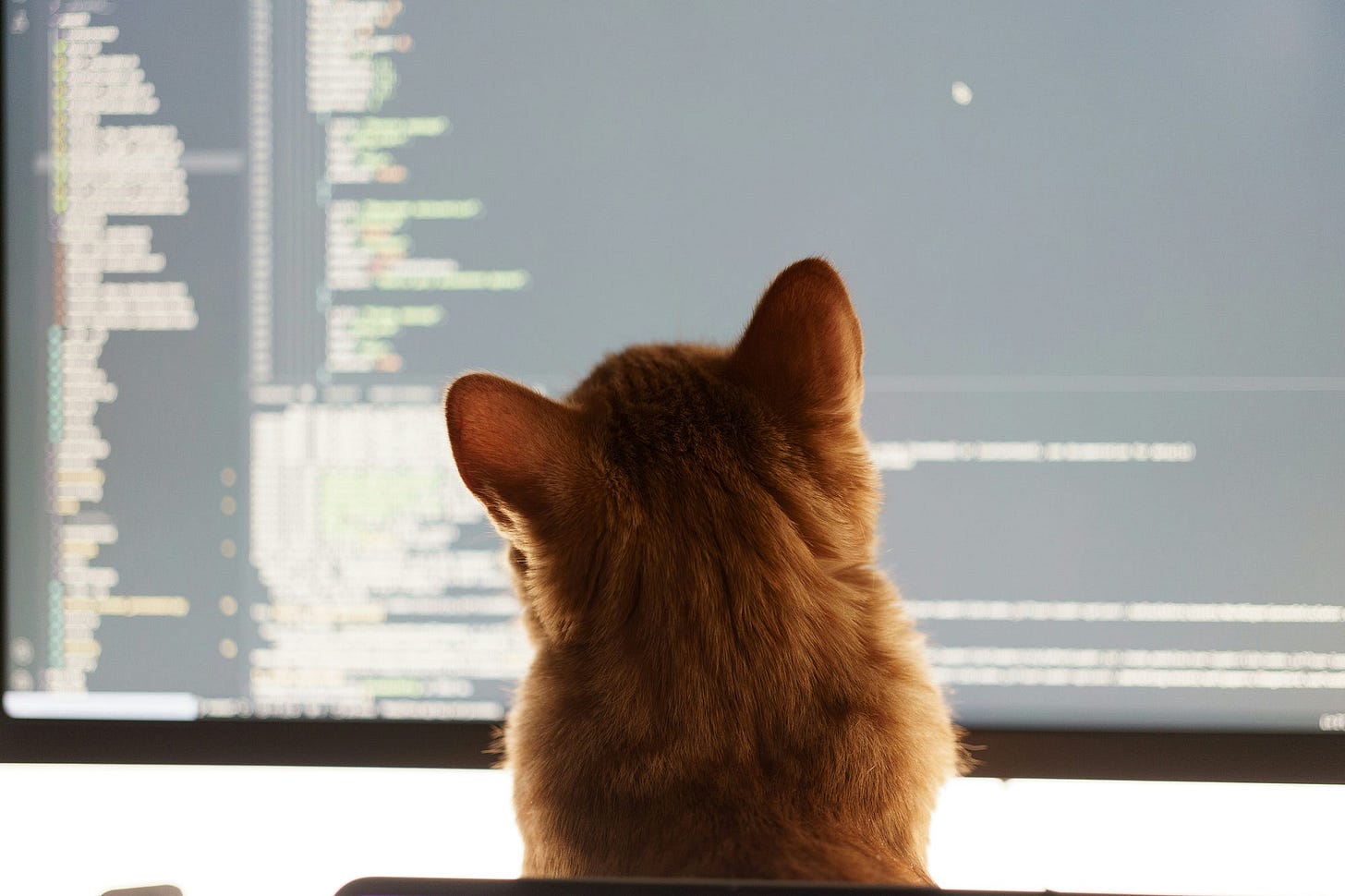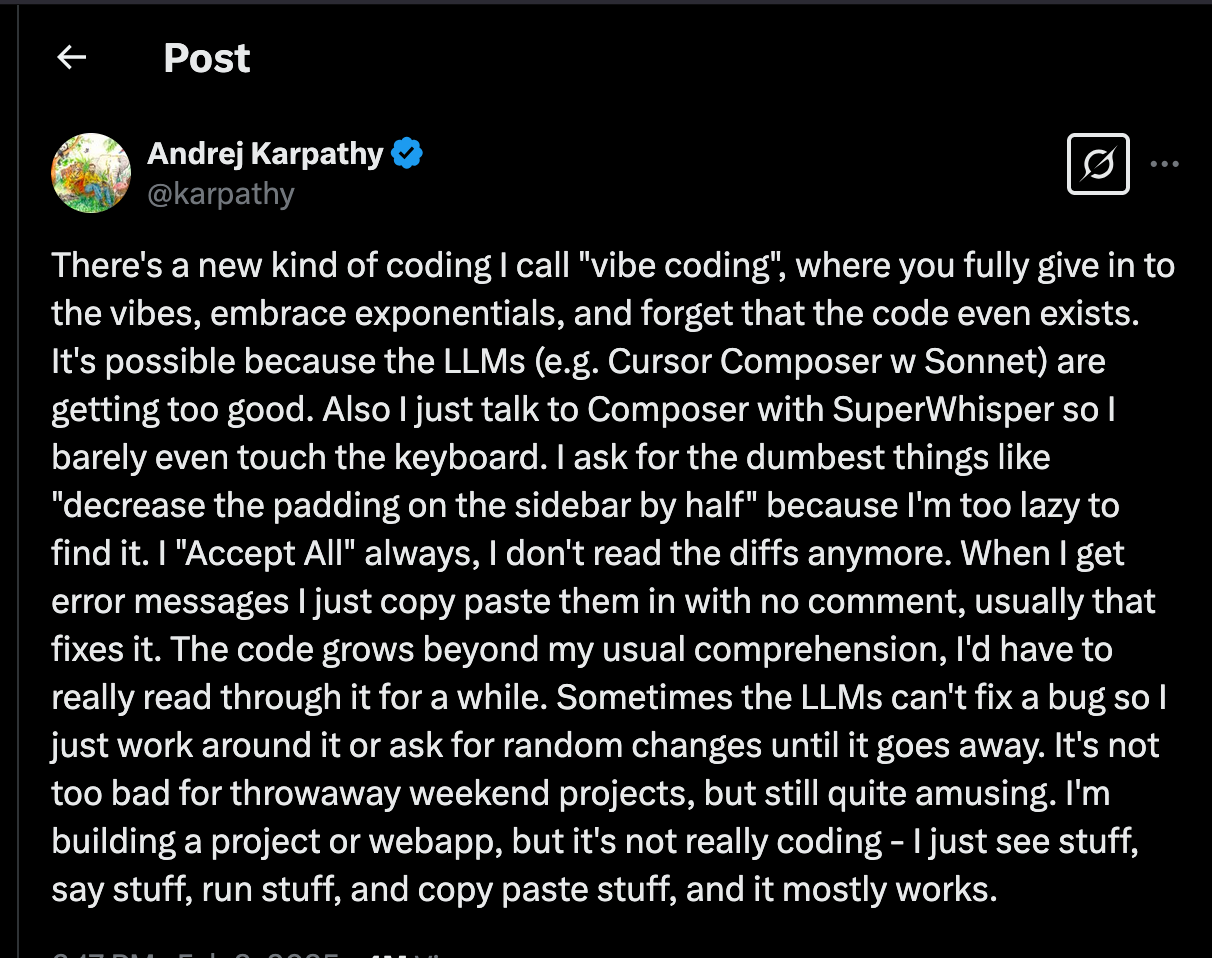Vibe Coding Has Arrived. Your Security Model Is Obsolete.
The next wave of vulnerabilities won’t come from developers — it’ll come from everyone else.

For decades, software creation was confined behind a high wall — only trained developers or engineers could write code.
That barrier defined how organizations built software, shaped security processes, and determined who owned responsibilities.
But that wall has fallen.
AI-powered platforms like Cursor AI, ChatGPT, Claude, GitHub Copilot — and most recently Amazon’s new Kiro — are enabling anyone with basic digital literacy to generate working software.
A phenomenon known as “vibe coding” (describing what you want in plain language and letting AI build it) is democratizing code creation far beyond what low-code platforms ever promised.
From Non-Developer to “Accidental Engineer”
What does this mean for you ? Let us take a look:
Your marketing manager can now spin up a landing page.
A compliance analyst can whip together a dashboard
Even interns can craft data-analysis tools.
This shift empowers small teams and accelerates innovation — but it also brings an influx of unsupervised, unvetted code into production environments, creating hidden security risks.
These “accidental engineers” may unintentionally introduce vulnerabilities, simply because they don’t see themselves as developers — and they lack secure development training.
The Risks of Shadow Development
Unlike shadow IT, which typically involves unauthorized SaaS tools, shadow development means AI-generated code lives inside your Git repos or internal platforms — and often without oversight.
It’s fast, nearly undetectable, and uncontrolled:
Speed: Entire apps or scripts can be auto-generated in hours.
Stealth: Code lives in familiar repositories — not blocked SaaS sites.
Uncontrollable: Blocking code via prompts isn’t feasible.
When everyone can code, everyone can also introduce risks — API leaks, insecure authentication, exposed PII, unencrypted storage.
And legacy AppSec tools (SAST, DAST, manual code reviews) were never designed to catch code AI generates at prompt time.
Rethinking Who “Owns” Code
Today, titles don’t matter.
Anyone who can:
Scaffold a Python script via AI,
Prompt-engineer a GUI or web app,
Drop LLM-generated functions into production —
…is now part of your software supply chain. And that means they’re also a source of supply-chain risk.
Security teams must update threat models to include these unexpected code contributors.
Strategic Shifts for Security Teams
Secure Prompting Training for All
Expand training beyond developers — to analysts, PMs, content teams — on how to craft safe prompts, vet AI-generated code, and catch flawed logic or hallucinated dependencies.Shift Left to Prompt-Level Reviews
Prompt design matters. Review prompts just as critically as code. Secure prompting should become as important as secure coding.Identify AI-Generated Commits
Adapt tooling to log and flag AI-generated code, capture prompt metadata in source control, and attribute code origins by user background.Clarify Code Ownership Models
Define who owns AI-generated code when a non-dev initiates it. Establish human‑in‑the‑loop validation, version-control rules, and clear merging protocols.Extend Monitoring Beyond Developers
Build detection rules for AI-originated code, check who approved it, ensure qualified engineers reviewed it, and flag new external API usage or packages.
Culture + Policy, Not Just Tools
AI-driven development isn’t just a tech shift — it’s cultural. Organizations need:
An AI Code Use Policy outlining roles, review processes, and deployment rights.
Secure Prompt Engineering as a core skill.
Recognition that everyone is a potential coder, deserving baseline training.
Guardrails like AI-aware CI/CD checks, sandbox prompts, and restricted AI agents.
Amazon Kiro: A Real-World Example
AWS has recently launched Kiro, an AI-driven IDE available in public preview . It tackles the very chaos of vibe coding by structuring it:
Generates specs, design docs, and task lists automatically.
Offers agent hooks for documentation, tests, and security scans during development .
Employs autonomous agents to transform prototypes into production‑ready code .
With free tiers and upcoming paid options, it aims to embed secure, spec-driven development into the AI workflow.
Embrace the Change — Safely
Yes, vibe coding brings risks — but also huge potential. With proper guidance, non-developers can:
Build tools improving security hygiene,
Automate reporting or log analysis,
Create threat models or simulate attacks.
Security can move from gatekeeper to enabler, ushering in a safer, more flexible software era.
Final Takeaway
Everyone is a developer now.
And that’s no prediction — it’s already happening. Security teams that cling to old assumptions will be caught off guard.
To secure our software future, we must redefine who gets to create it — and ensure safety is baked in from the very first prompt.







